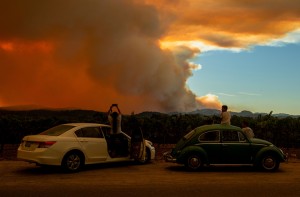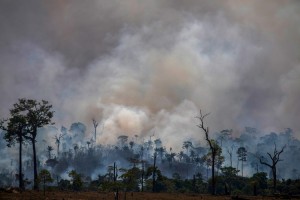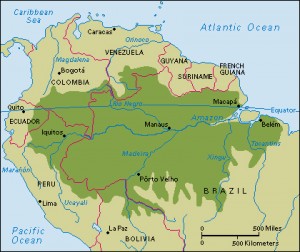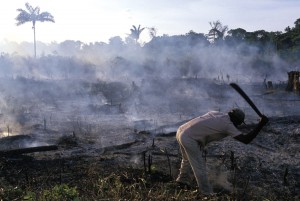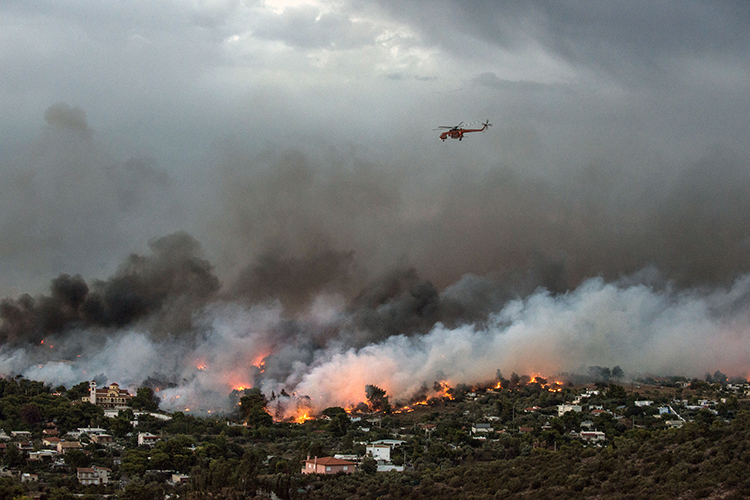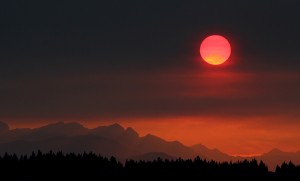Wildfires Cast Pall over North America
Monday, August 9th, 2021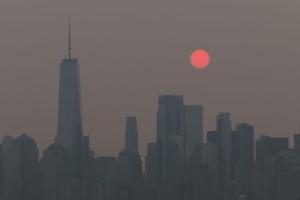
In this photograph from July 2021, One World Trade Center (left) and other New York City buildings are shrouded by smoke and haze from wildfires in western North America.
Credit: © Bjoern Kils, New York Media Boat/Reuters/Alamy Images
Have you looked at the sun or moon low in the sky in the past few weeks? You may have noticed them take on hues of orange and red. A hazy film may have blurred out the horizon. These visual effects were caused by smoke and haze from fires in western North America, in what is shaping up to be another record wildfire season. So far this year, wildfires have scorched nearly 3 million acres (1.2 million hectares) in the United States alone.
The Dixie Fire is the largest in California, burning almost 250,000 acres (100,000 hectares). It began near where the deadly Camp Fire burned in 2018, killing more than 80 people. Both fires were sparked by equipment from the utility company Pacific Gas and Electric Co. (PG&E). This month, PG&E announced its intent to bury 10,000 miles (16,000 kilometers) of power lines in areas of the state most at risk for wildfires. The project—which PG&E had long resisted—is estimated to cost at least $15 billion.
California usually dominates the wildfire season. The largest fire of the season, however, belongs to Oregon. The Bootleg Fire started on July 6 and has burned more than 400,000 acres (160,000 hectares). The fire persevered through rain and continues to defy efforts to contain it.
The Bootleg Fire threatened Mitchell Monument, dedicated to the only civilians killed on U.S. soil during World War II (1939-1945). Toward the end of the war, Japan released more than 9,000 bomb-carrying balloons, intended to land on the West Coast of the United States. The bombs caused mostly minor damage. But one bomb killed five members of a picnicking family near Bly, Oregon. Firefighters battling the Bootleg blaze worked to save the forest around the monument, including trees damaged by the bomb blast.
Nearby Idaho and Montana also have dozens of fires. The Canadian province of British Columbia declared a state of emergency due to the hundreds of wildfires raging there. The government of Mexico sent firefighters to the province to assist. Outside North America, fires burned in Greece, Turkey, Russia, and Italy.
Smoke from the North American fires drifted east on the prevailing winds, reducing air quality across the continent. Air quality was affected as far away as New York City. The smoke threatened people with such medical conditions as asthma, chronic obstructive pulmonary disease (COPD), and heart disease.
Climatologists and other experts blame the severe fire outbreaks on the intense drought gripping the western half of the continent. In June, a sizzling heat wave killed hundreds of people in Oregon, Washington, and British Columbia. Experts strongly suspect the drought and heat were intensified by climate change.

